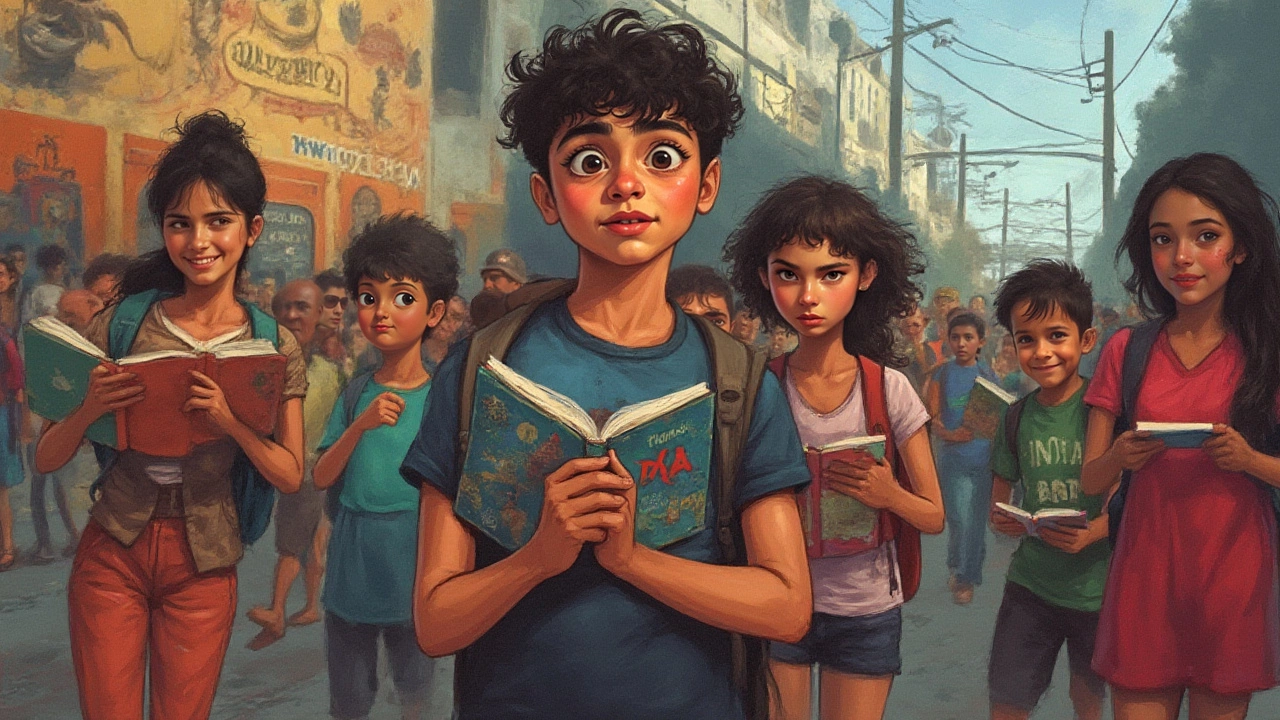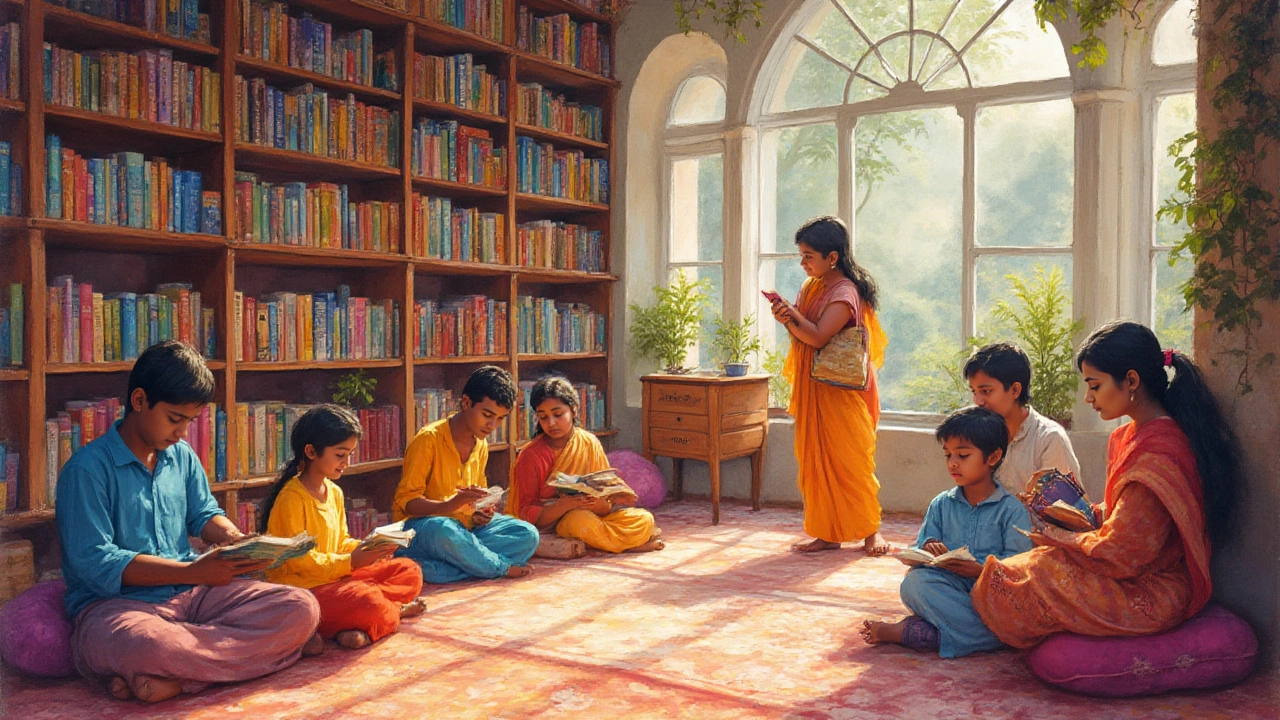Maybe you’ve seen a teenager devouring a YA book on the subway, or your younger cousin is obsessed with tales of high school angst and dystopian quests. But have you ever stopped and thought, "Wait, what exact age is supposed to read YA?" Some folks swear their ten-year-old is ready for anything on the library’s YA shelf, while others are side-eyeing even high schoolers browsing the same section. Here's the kicker—YA wasn’t even a real marketing category until the 1960s. Before that, teens were basically handed whatever was lying around, from "Huckleberry Finn" to "To Kill a Mockingbird." Somehow, nobody exploded. So what’s changed, and why does everyone suddenly care so much about reading age?
What Does "YA" Actually Mean?
YA stands for Young Adult, but that label is more slippery than it seems. YA fiction is officially aimed at readers aged 12 to 18, but honestly, that's just a marketing guideline. Authors, publishers, and even librarians have slightly different takes on what counts. These days, YA books can cover just about everything—first crushes, school drama, fantasy kingdoms, identity struggles, zombies taking over the world. But here’s where things get interesting: these themes aren't locked in a vault marked "Teenagers Only." According to data pulled in 2023 from NPD BookScan, about 55% of YA books were actually bought by adults, not teens, and that's been fairly steady for years. That means the real audience is a mix of middle schoolers, high schoolers, and, let's be honest, their parents (and sometimes their grandparents).
So why is it called "young adult" if grown adults are reading it? Part of it’s nostalgia—YA often zeroes in on that gut-twist of growing up—but part of it’s just good stories. If you’re wondering what’s actually inside a YA book, the truth is there’s a massive range. You might have a coming-of-age tale like "The Hate U Give," which tackles racism and police brutality head-on, or you might have something lighter but just as poignant, like "Fangirl" by Rainbow Rowell, about college and fan fiction. But nobody’s enforcing age gates at the library door. Unless a book is explicitly labeled "Mature YA" (think content warnings for graphic violence, sex, or heavy trauma), you can pretty much count on most YA being intended—at least in theory—for those twelve and up.
What Age Really Fits YA Books?
This is the part everyone gets tripped up on, because age and maturity just don’t go hand in hand. The official "12-18" target? A suggestion, not a law. Let’s talk middle school for a second. Sixth graders might lose themselves in the magic of "Percy Jackson," but most actual twelve-year-olds aren’t hunting down the heavier, swearier teen books like "Looking for Alaska" (which, by the way, made the American Library Association’s top-10 "most challenged" list just last year for explicit content). Yet there are eighth graders breezing through horror novels with murdery plotlines or fantasy series with intense romance. Some thirteen-year-olds are mentally ready for the tough stuff, others stick to science fiction with zero kissing, and both are fine choices.
High schoolers? They get the full buffet. Tenth graders might be reading "The Hunger Games," with its brutal fight-to-the-death premise, or trying out something with more complex themes, like "They Both Die at the End." For a lot of teens, reading about darker issues is less about shock value and more about dealing with real-life stress—books offer a safe place to process feelings. And honestly, some adults still avoid certain YA series because the drama feels too close to home. The funniest twist: some of the most loyal fans are in their twenties, thirties, or beyond, reflecting on their own coming-of-age moments or just loving the tight, fast-paced storytelling that YA delivers.
What about younger kids? Parents sometimes ask whether eight or nine-year-olds can handle YA. Here’s where it gets tricky. The language and situations in YA are usually written with a twelve-year-old in mind—think first romantic relationships, mild swearing, family breakups, racism, or even death. That said, for mature, advanced readers in late elementary, dipping toes into the tamer side of YA (like "Wonder" or "Anne of Green Gables" reimaginings) can absolutely work. The real make-or-break factor is whether a kid can handle the emotional themes, not just the number on their birthday cake.

Picking the Right YA Book for the Right Reader
Let’s get tactical—how do you actually decide what YA book is a good fit? It won’t shock anyone to hear that what’s right for your best friend’s twelve-year-old might not be right for yours. One tip: flip to the endpapers or check review sites like Common Sense Media or Book Riot. These sites break down exactly what’s inside a book, from language and violence to relational drama. Librarians often make lists like “YA for Younger Teens” or “Clean YA” (minimal swearing and romance) versus “Edgier YA” (think the grit of "Eleanor & Park"). Asking real-life teens is another underrated strategy. Teens have agency and often know what’s popular, what’s "old news," and what isn’t worth the page count. If a book is blowing up on TikTok’s BookTok, like "Six of Crows" or "A Court of Thorns and Roses," it’s probably crossing that invisible YA-to-adult bridge anyway.
If you’re a teen or a parent picking a YA book, ask these questions: Does this book match my own experiences or challenge me to think differently? Am I ready for topics like death, depression, or romance? Would I put this in a classroom library, or is it better as a private read? If you’re unsure, read a chapter first. YA authors know they’re writing for an audience with wildly different comfort levels—some go super gentle, others go all out.
Also, some school districts create their own unofficial age recommendations. A book might be marked "For Ages 14+" if there’s explicit romance or violence. Don’t ignore these suggestions, but also don’t let them be the final word. If you remember finding "The Outsiders" or "Harry Potter" as a tween, you know the thrill of reading beyond your comfort zone. Sometimes that's exactly where the magic lives.
Tips for Navigating YA Reading as a Parent, Teen, or Adult
So, how do you make the journey smoother? One trick is to treat librarians and indie bookstore staff like guides—they’ve usually read the latest releases and can steer you toward something that's age-appropriate or even custom-picked based on your interests. For families, it can help to read alongside your teen, or at least check in about what they’re reading. Some teens crave discussing tough topics with someone older; others just want privacy.
Parents, don’t panic if your middle schooler picks up a book with themes you’re not ready to tackle. Use it as a springboard for conversation, not confrontation. And teens: If a book gets under your skin or feels too intense, put it down. There’s no bonus prize for powering through stories that make you uncomfortable. Adults curious about YA? Dive in. YA isn’t just "watered down" grown-up fare—it’s fast-paced, sharply written, and sometimes more emotionally honest than adult fiction.
Last thing: remember that reading level doesn’t equal emotional readiness. Just because someone can crack through "Divergent" in an afternoon doesn’t mean they’re ready for the trauma in "The Hate U Give" or the raw feeling in "All the Bright Places." Each reader’s mileage truly varies. Above all, reading YA should feel empowering, not like checking off a box. Whether you’re twelve or seventy, if the story grabs you, you’re the right age for YA. That’s not a loophole—it’s why books matter in the first place. And for those worrying about crossing some invisible line, relax—there’s no bouncer guarding the YA shelves, just a bunch of readers all chasing that same spark.

